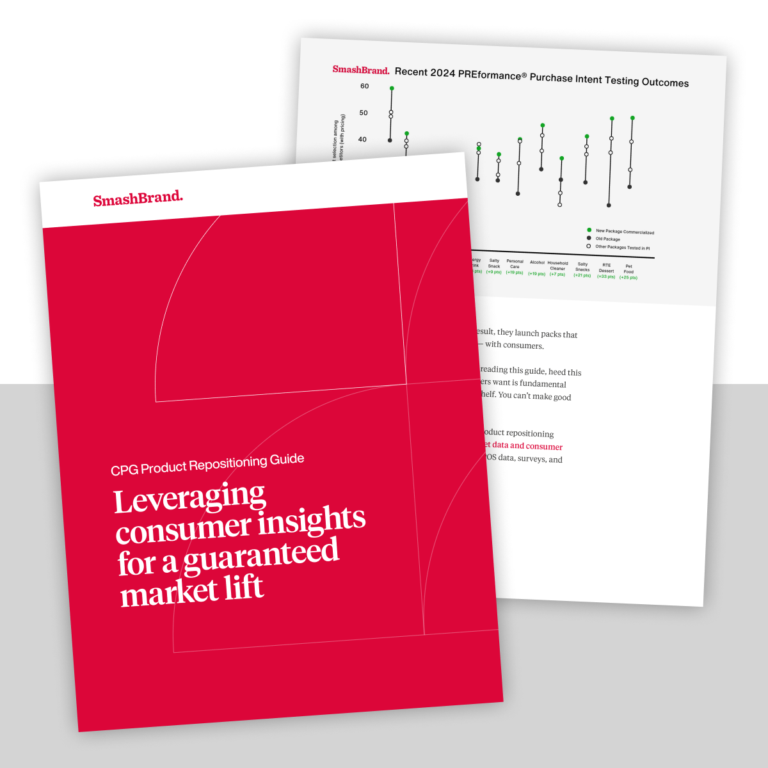No idea is more American than the promise that it’s never too late to reinvent oneself. In our outlooks, we’re “free to be you and me” and taught to “never give up.” These optimistic tropes can sometimes feel a bit hokey, but it’s important to remember these essential myths (truths?) when girding your loins for an upcoming rebranding campaign. Changing your brand image requires equal parts gusto, intestinal fortitude, and a bright and capable rebranding agency to help you lead the process and roll out the brand strategy.
It’s essential to remember that a brand is not just a logo or packaging design, but the idea that comes to mind when people think of your line of products or services. Rebranding is more than hiring a packaging design company to create a new way to package your products; changing your brand image starts at the top of your company and filters through all its components.
When you know your reasons for rebranding but fear disastrous missteps like the infamous Tropicana packaging redesign #fail of 2009, here are a few steps to take when successfully changing your image is the goal of your rebranding strategy, and failure is not an option.
Don’t alienate the existing customer base.
Never alienate the core customer base that aligns with your target audience. While rebranding might unsettle some loyal customers, a thoughtful approach prevents widespread loss of brand loyalty. Carefully evaluate your rebranding template by incorporating customer feedback and insights from your in-house team, brand development company, and other key stakeholders.
How not to alienate customers.
Be Contemplative About Your Rebranding Mission: Before initiating any changes, consider the possible reactions from your existing customer base by asking a series of rebranding questions. You can accomplish this through surveys, focus groups, and more profound consumer research. Smaller companies can utilize social media and email polls, while larger companies should consider using an agency specializing in consumer testing.
Include Feedback from Key Players: While we should lean on consumer feedback, as they are the purchasers, ideas on how to keep existing customers in mind may also come from founders, brand managers, and the marketing team. Customer feedback tools can help gather and analyze this valuable input. There may also be value in communicating with those closest to the customers for their feedback. When creating the rebranding strategy, a branding agency will also bring its experience and expertise into the discussion.
Ensure the New Design Corresponds with Brand Understanding: When creating the new brand identity, carry over specific elements (e.g., brand colors, logo design) to ensure loyal customers can immediately recognize the brand. Remember, consistency is the key to developing a solid brand identity, so make it an essential element during your rebranding launch.
Keep new designs familiar, yet distinct.
Changing your brand image doesn’t mean scrapping everything that defines your brand from the beginning. A new packaging design should be part of your overall brand redesign rollout, but consult carefully with your chosen packaging design company to ensure the two key players are on the same page.
The new design should be similar to the old one because it feels like it came from the same bloodline; don’t make your new packaging design look like the bastard stepchild of its market-share-establishing forefathers.
How to maintain familiarity?
Consult With Experts: Almost every successful rebrand has resulted from an effort that includes intelligent people inside and outside the company. Gather solid reasons for rebranding before stepping in. Working closely with experts who bring a unique perspective helps solve problems that the internal team may overlook. Their expertise will help you develop a comprehensive rebranding checklist to ensure a smooth process.
Retain Elements of the Original Design: The new design should share some “DNA” with the original one. As mentioned, this could mean retaining specific color schemes, shapes, and styles that define your brand so it remains recognizable to your existing customer base.
Commit, commit & commit.
As with many business and life decisions, commitment is the key to a successful rebrand. Be sure your whole team is on the same page and commit to staying the course through stormy weather that may envelop your intrepid new branding ship as it begins its journey away from the port. Don’t be quick to abandon your rebrand if you encounter initial disturbances; these things take time. Changing your brand image is a process, not a one-step flick-of-the-switch reboot.
For example, if you start a cafe business and grow it to a successful brand, you can’t directly expand it to new offerings without a proper plan. You should make a practical plan, involve your team, and stay motivated even if you experience an initial drop in customers.
How to stay committed?
Get The Team On The Same Page: Your team must align with the rebranding vision. A successful rebrand requires the commitment of everyone, from top management to frontline employees. Only push forward once you have as many conversations as necessary to create an agreement to pursue the rebrand.
Stay the Course: Subjective opinions will undoubtedly find their way into the rebranding strategy like a virus. Prevent this from happening by letting the data speak for itself. Even if you encounter challenges or setbacks, remain committed to the rebranding effort.
Be Patient: Rebranding campaigns don’t happen overnight. Even a partial rebrand can take several months to complete. Remember, you seek a long-term impact, not a short-term solution.
Prepare for Challenges: Even with a data-driven approach, unexpected challenges often emerge during the rebranding process. Here is where the packaging design agency’s experience and expertise come into play. Having overseen various projects, they will understand when to pivot or how to overcome challenges.
Omnichannel uniformity.
Speaking of commitment, ensure that your company’s other rebranding elements align with the changes you develop with your selected packaging design company. If you roll out a new packaging design but run a website with the old logo and font, you confuse your consumer base and convey a sense of uncertainty about the redesign. Get everyone on the same page, including all your customer interaction points.
How do you uniform the brand?
Ensure Consistency Across Platforms: Before launching the rebrand, review every piece of brand and marketing collateral to prevent brand confusion. Review the website, social media, marketing materials, and in-store promotions to ensure they align with the new brand guidelines.
Get Everyone On The Same Page: To create uniformity in the design and messaging, you must communicate the change to everyone who touches the marketing campaign. All external project and account managers must confirm their understanding of each change you’ve made.
Align Customer Interaction Points: From customer service interactions to media mentions, monitor each place where customer interactions and conversations occur. By taking a proactive approach to branding alignment, you maintain equity with the target market.
Avoid Mixed Signals: Update your branding consistently across all platforms to maintain a unified presence. An example could be older website articles that still receive website traffic. While this may sound like a minor issue, it will still have a negative impact, as it confuses customers and conveys uncertainty about the rebranding.
Redefine Brand
Finally, remember that changing your brand image takes more than redesigning packaging or rolling out a new logo. These visual elements are merely artistic representations of the more significant idea behind your brand. When undertaking a major rebranding project, remember that putting a new coat of paint on rotten boards is only a temporary solution. Your design company will help you create a unique visual representation of your company with a practical purpose – delivering your product to the consumer – but it can’t fix a broken institution with a blurry self-image.
How to launch a rebranding campaign?
Clarify the Problem: You must clearly understand why you’re undertaking this rebrand and what you hope to achieve. This internal work is critical for rebranding package design and other dimensions. Don’t look for symptoms; identify the root cause of why the brand is not performing optimally in the market.
Address Core Issues: Unlike a brand refresh, a complete rebrand is a change in brand positioning. Be sure to address the problems with the current market position before concerning yourself with superficial elements.
Look Beyond Visual Elements: A rebranding strategy encompasses much more than graphic design. Since visual elements support the brand voice and values, messaging is even more important than the visual makeover.
Work with Professionals: Going it alone often has a net adverse effect. The investment in consumer research, expert design, and brand testing is the only way to compete at a high level.
Ready for a rebrand?
Before calling it the pros at a brand strategy agency, be sure you’ve done the internal work necessary to know why you’re undertaking the rebrand and what you want to accomplish as a complete institution. Preparing will not guarantee your rebranding success, but it ensures a smoother process and a more likely outcome.
While the process does take time, rebranding doesn’t have to be a nightmare experience. Going about the process correctly by following a rebranding checklist lays the foundation for successfully reinventing your brand in consumers’ eyes and breathing new life into a previously stagnant concept to capture a more significant market share. Be sure to approach the process with seriousness, purpose, patience, and commitment to guarantee maximum success.
Data-Driven Brand Development That Can Guarantee Shelf Performance.
Whether your transformation involves a partial or complete rebrand, we can provide performance predictability. SmashBrand is a brand development agency that researches, designs, and tests all products to ensure peak shelf performance. Book a time to discuss your project with our team.
Subscribe to
Nice Package.
A monthly newsletter that unpacks a critical topic in the FMCG & CPG industry.
Free Resource.

CPG product repositioning guide.
Explore the five undeniable signs your CPG product needs repositioning along with strategies for leveraging consumer insights for a guaranteed market lift.
Learn More About CPG product repositioning guide.